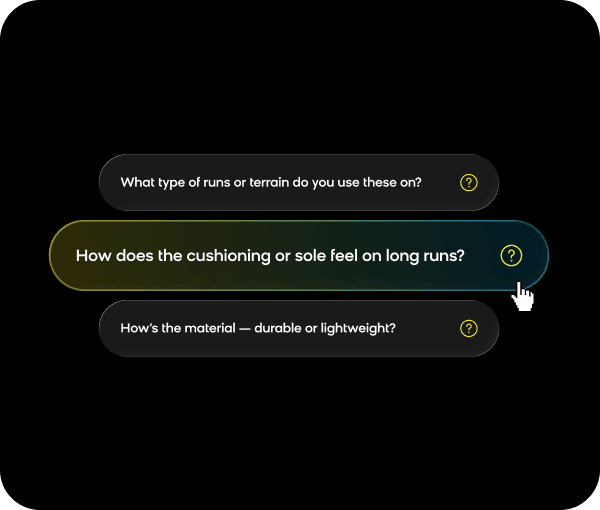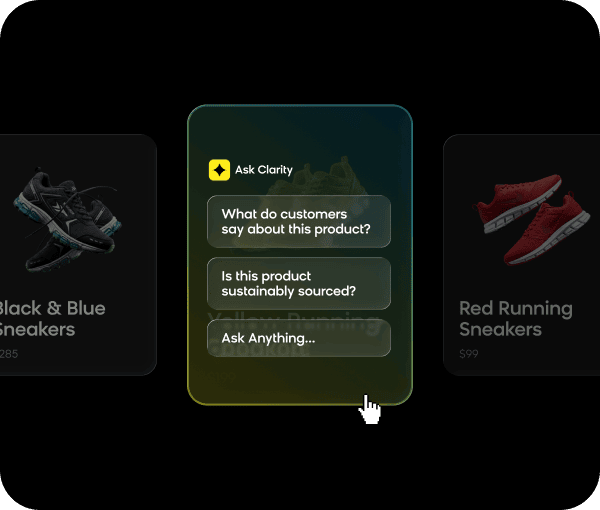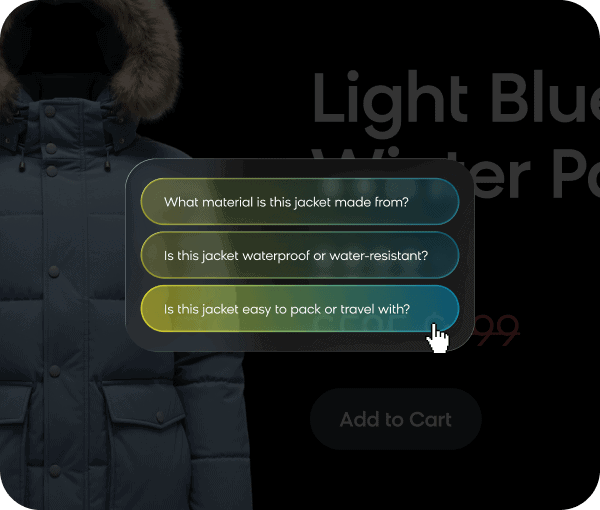From Chaotic Signals, a Pattern Emerges
LLMs, agents, conversational commerce, generative personalization — the AI landscape is constantly shifting. Every week brings new capabilities, new platforms, new promises. And beneath it all, the same question: What actually matters?
Here’s the thing: Nobody has the full picture. Not the hyperscalers, not the startups, not the analysts. The technology is evolving too fast for any single perspective to capture it completely.
But here’s what we’ve learned: Collective observation beats individual prediction.
This…is murmuration.
A murmuration is thousands of starlings moving as one — each bird simply watching its neighbors, creating collective intelligence without any central control.
That’s the driver behind The Edge Summit — global gatherings in Miami and London where operators, technologists, and strategists compared notes on what’s actually working. Not forecasts or predictions, but observations about where the flock is moving — and why. These are practical patterns you can act on today, drawn from hundreds of conversations about what’s working, what’s failing, and what’s worth paying attention to.
The pace isn’t slowing down, but you don’t need a crystal ball to navigate it — you just need to know where to look.
What follows are the patterns we’re seeing and the moves that are working right now.
Tapping Into Your Marketing Team’s True Potential
Marketers have been using workflow-based processes for so long that it’s hard to imagine a world beyond that. But we’ve heard from countless brands that they desperately need to find a better way to deliver personalization at scale.
The reality is: As customers continue to demand more personalized experiences, brands simply can’t afford to get bogged down in manual tasks.
“You can’t allow resource bottlenecks to get in the way of delivering this compelling user experience and personalizing at the speed of agentic AI.
You need to harness the power of autonomous systems to supercharge your teams.”
Raj De Datta, CEO and co-founder of Bloomreach
Here’s how you can start empowering your teams to work more effectively:
Double Down on Email
Email is a crucial channel for demonstrating brand authenticity and connecting with customers. Make sure every email campaign is automatically rooted in deep personalization driven by real-time insights.
Reimagine Team Responsibilities
You’re not replacing people with autonomous marketing — you’re changing the way they work. Instead of procedural tasks, refocus your teams on creativity and high-level strategy. You know, the stuff that matters.
Embrace Agentic AI
AI agents aren’t a far-flung prediction — you can already start taking advantage of them. Find ways to use agentic AI to unlock efficiencies and drastically reduce your team’s manual processes.
Autonomous Marketing: Ease or Unease?
As AI agents burst onto the scene, the question that inevitably arises is, “What happens to my job?”
The answer is that those jobs will simply change and evolve. We’ve seen it firsthand from brands that have started experimenting with autonomous marketing. Their marketing teams were stretched thin and could only focus on the next campaign, but now agentic AI can take care of building the journeys while they focus on more important tasks.
After all, agents are only as good as the data they have and understand. Marketers need to know what data needs to be used to build successful experiences, then guide the agents to execute that vision.


What’s Old Is New Again: Finding Patterns in Email
Even though email marketing has been around for decades, it still remains one of the most effective ways to connect with your customers.
However, the tried-and-true nature of email also makes it incredibly competitive. Here are some tips to help you stand out in the inbox:
Want to see the full picture of email’s potential? Learn how you can put the AI in email.
Balancing Autonomous Efficiency With Human Ingenuity

5x more revenue per email
To create more dynamic marketing campaigns, Revolution Beauty turned to Bloomreach Affinity. The brand focused on strategy, then prompted Affinity to create campaigns and do the heavy lifting.
This efficiency has resulted in the team driving 5x more revenue per email, with over 5% of total email revenue now being generated by new AI-created campaigns.

2x increase in value per email
Collectibles brand Sideshow has a lean marketing team, but still needed to manage dozens of product drops while personalizing for a diverse and passionate fanbase. But with Affinity, the brand could go from campaign idea to launch in under 15 minutes.
Now? Sideshow is driving a 2x increase in value per email delivered, with 13.9% of email revenue directly attributed to Affinity — including $10K in revenue from a single Affinity-powered campaign.
“We were trying to think out of the box, and it’s incredible what Affinity has unlocked for us. It’s so easy to build campaigns now, and they’ve been performing even better than we expected.”
Ash Madhav, Head of Customer Insight & Engagement at Revolution Beauty
Creating Customer Experiences That Keep Up With Customer Expectations
You’re not imagining things: Customer expectations and behaviors have changed significantly over the past few years.
And it’s not just that they want better personalization. There’s been a fundamental shift in how they want to interact with your brand.
“Consumers aren’t just expecting a higher degree of relevancy, but dynamic two-way interactions.”
Raj De Datta, CEO and co-founder of Bloomreach
Here’s how you can navigate this new level of customer expectations:
Get Alignment
Personalization for the sake of personalization will fail. Figure out your top goal(s) with leadership and other relevant teams. This will allow you to tailor your AI personalization strategy in a more intentional and effective way.
Find the Right Audiences
Use solutions like real-time segments to build audiences that update in real time based on past and present customer behavior. Consider segments based on brand, color, price, and size affinity, as well as geography, vertical, or new vs. returning users.
Start Focusing on Conversations
Conversational AI is changing how people shop online. You need to stay ahead of the curve if you want to stay competitive. Start experimenting with adding conversational experiences across your shopping experience.
What’s the Rush To Start Now?
You may be wary of diving headfirst into new technology, but there’s a problem with approaching innovation with caution: Consumers aren’t waiting for you.
In a recent report, we found that 93% of shoppers consider conversational capabilities important, and 61.3% are interested in a conversational search bar. That means if you’re not offering conversational experiences soon, your customers will likely start looking elsewhere.
Now’s the time to start experimenting with AI and seeing what use cases actually resonate with your customers. This will also give you a leg up if you need to pivot later when the technological landscape shifts again.
93%
of shoppers consider conversational capabilities important, and 61.3% are interested in a conversational search bar.
Shaping the Conversation
What we’re seeing: Conversational agents will do away with the traditional website. While it won’t happen overnight, consumers are already transitioning from search bars to conversations, and will eventually expect true two-way dialogue.
So, as more consumers embrace conversational shopping, you’ll need to figure out how and where to implement it. Just remember — conversational shopping is so much more than just a chatbot.
Here are some ways to start experimenting with conversational shopping:

Display clickable question prompts directly on product detail pages

Embed questions into the product grid on product listing pages

Proactively engage customers based on specific triggers

Surface common questions as the customer searches

Create a fully conversational search bar
Setting a New Standard in Personalized Experiences

3.5M customers served a personalized site experience
Thirdlove is all about helping women find the right fit, so it knew its marketing had to be just as tailored. The brand used purchase data and responses from fitting quizzes to create real-time customer archetypes, which were then used to personalize campaigns.
As a result, Thirdlove can now deliver personalized shopping experiences to 3.5 million customers and has generated over $256K in incremental revenue within a few months.

+39.8% revenue per visit
Fashion, lifestyle, and specialty retail group TFG (The Foschini Group) wanted to explore new ways to reach and engage its customers. That’s why TFG implemented Bloomreach Clarity on Bash, its online shopping platform, during Black Friday.
Clarity drove incredible results during the brand’s busiest time of the year. Customers who interacted with the conversational agent had a 35.2% higher online conversion rate, a 39.8% higher RPV, and a 28.1% lower exit rate.
Conversational shopping isn’t just a passing trend.
We’ve seen the data, and we’ve seen the impact — customers want to shop conversationally. Read our report to find out how you can start transforming your shopping experience.
Connecting the Dots With Your Data
A lot may be changing around AI technology, but one thing remains constant: AI is nothing without data. Data is what allows AI to understand your customers, fuel personalized experiences, and create unique customer journeys. And fortunately, this is likely data you already have access to.
“The reality is that most brands have the data already — it’s just a matter of connecting it.”
Ramzi Rahbani, Chief Product Officer at FortNine
Here’s what you can focus on now:
Capture Rich Signals
If you want to execute on strategic goals, you’ll need the right data. Make sure you gather data points that can lead to better personalization (e.g., size, style, favorite sport, etc.).
Stay Consistent
Consistently clean and structure your data so AI can find useful patterns. The quality of your data directly correlates to the power of your AI.
Constantly Experiment
After AI finds the patterns, you can shape the narratives. Test different angles and see what works. Be sure to also use your data to validate AI’s performance and optimize accordingly.
But Wait… What if My Data Isn’t Perfect?
Don’t worry — nobody’s is.
Something we’ve consistently heard is that data is hard to get right. Even the most sophisticated organizations struggle with issues like:
- Incomplete records
- Outdated information
- Duplicate entries
- Measurement errors
- Biases introduced during data gathering or interpretation
Sound familiar? It’s because within a dynamic business environment, data is constantly changing, which makes it nearly impossible to maintain 100% accuracy and completeness across all your data sets at all times.
Turning Imperfection Into Adaptation
Your data not being perfect isn’t an obstacle — it’s an opportunity. The pattern we’re seeing is that the fundamental purpose of websites is rapidly changing. “It’s really a story of ‘the website is dead, long live the website,’” said Raj De Datta, the CEO and co-founder of Bloomreach. Now’s your chance to take a hard look at your foundational data and figure out how to adapt it for a world of agentic AI.
“The core of what makes websites valuable — the structure metadata, search box, products, customer data, etc. — is just as valuable as it ever was. But what’s changed is how that information reaches consumers. Your customer experience will soon be driven by a collection of agents that are proxying for humans and acting on their behalf.”
Raj De Datta, CEO and co-founder of Bloomreach


If your brand’s seeing a dip in metrics, it’s not because your teams aren’t trying hard enough.
It’s because you’re focusing on the wrong problem. You need to focus on retooling your websites to speak to AI agents because that’s how your customers will be finding your products moving forward.
Data in Action: How Rich Data Drives Rich Results

57.31€ average order value
United Fashion Group (UFG) used AI-driven contextual personalization to create next-level on-site recommendations. By gathering data around each customer’s patterns and behaviors, UFG could show products tailored to each individual customer’s preferences.
This level of personalization drove a 20.4% engagement rate, a 43.75% engagement rate, and an AOV of €57.30. That’s data done right.

+14% campaign revenue
To improve its ad campaigns, music and entertainment retailer HMV turned to AutoSegments. HMV simply needed to prompt AI agents with the customer properties it wanted, and the AI autonomously created matching segments.
HMV’s campaigns immediately benefited from the power of AutoSegments, with a 14% lift in campaign revenue, a 34% increase in impressions, and a 425% increase in landing page views.
Find Power in the Patterns
At this point, it’s inevitable that AI will change and evolve in ways we can’t even begin to imagine. However, by turning to the collective knowledge of your peers, experimenting with new technologies, and keeping track of the patterns that emerge, you may be surprised at how quickly you’ll be able to pivot and adapt.
When you no longer feel tossed around by the changing times, you’ll start to see the freedom and excitement that comes with transformative tech.
The result? What once felt like chaotic noise will reveal itself as a rhythmic force that can completely revitalize the way brands connect with customers.
That’s the beauty — and power — of murmurations in the AI era.
Want to see what you can really achieve when you’re part of a murmuration?
Sign up now to join us at the 2026 Edge Summit
Already a customer?
Join the Bloomreach Rewards Program to share your knowledge with peers, gain valuable insights from other leaders, and grow your network.